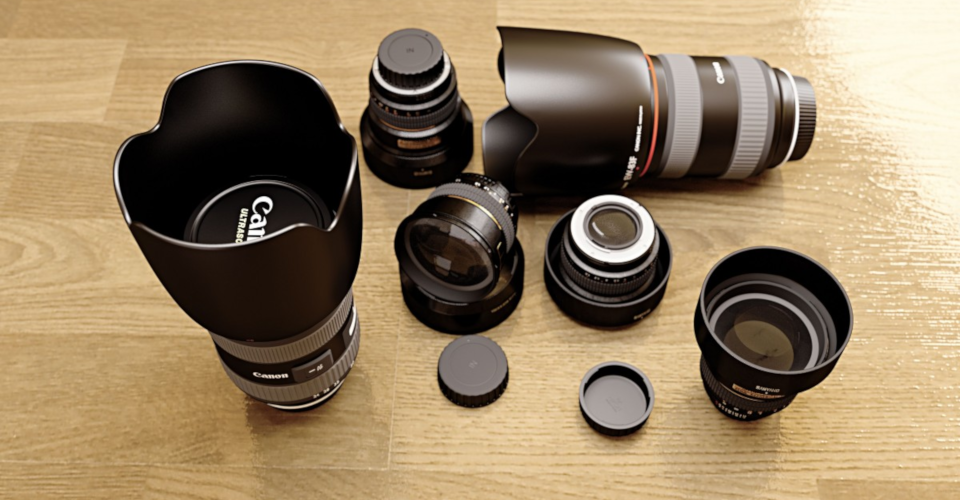6 Best Canon EF Lenses in 2020
EF or Electro-Focus is the lens mount found on Canon EOS cameras since the late 90s. It’s a comprehensive and robust system Canon users appreciate for its cross-camera compatibility. A modern EF lens works on full-frame and APS-C DSLRs, with a 1.5x crop applied in case of the latter. You can also invest in a converter and attach EF lenses to Canon mirrorless cameras, further increasing their usefulness.
Here are the six best Canon EF lenses you can buy today. All have a quiet autofocusing motor, and you can make manual focus adjustments by rotating the ring in AF mode. We’ve included zoom lenses & primes across the most widely-used focal range, so finding the right lens for your next shoot should be simple. Check them out and get even more out of your Canon camera.
| Budget |
|---|
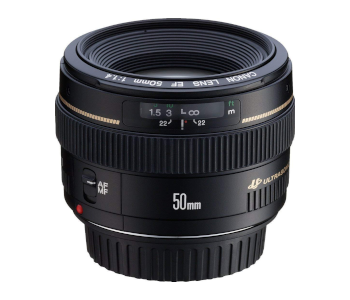 |
| Canon EF 50mm f/1.4 USM |
| 4.3/5.0 |
| Type: Standard prime |
| Image stabilization: No |
| Minimal vignetting for such a wide aperture. |
| Check Amazon |
| Best Value |
|---|
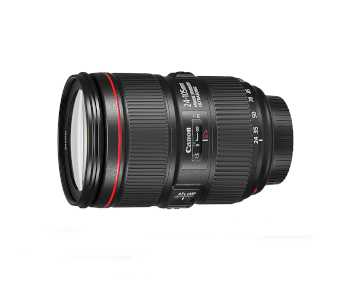 |
| Canon EF 24-105mm f/4 L IS II USM |
| 4.5/5.0 |
| Type: All-in-one zoom |
| Image stabilization: Yes |
| Wide focal range ensures versatility. |
| Check Amazon |
| Top Pick |
|---|
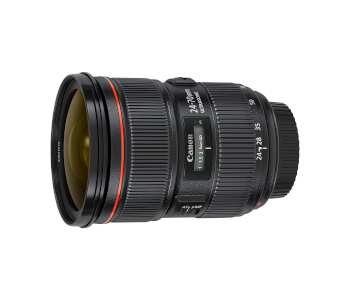 |
| Canon EF 24-70mm f/2.8L II USM |
| 4.7/5.0 |
| Type: Standard zoom |
| Image stabilization: No |
| Remarkable bokeh for a standard zoom lens. |
| Check Amazon |
Canon EF Lenses Comparison Table
| Image | Product | Overall Rating | Image quality | Build quality | Versatility | Price |
|---|---|---|---|---|---|---|
 | Canon EF 24-70mm f/2.8L II USM | 4.7 | 4.6 | 4.8 | 4.7 | Check Price |
 | Canon EF 24-105mm f/4 L IS USM | 4.5 | 4.3 | 4.4 | 4.8 | Check Price |
 | Canon EF 70-200mm f/4L IS II USM | 4.7 | 4.7 | 4.6 | 4.7 | Check Price |
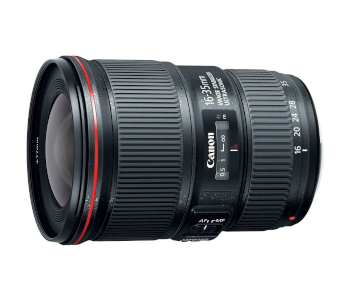 | Canon EF 16-35mm f/4L IS USM | 4.5 | 4.6 | 4.5 | 4.5 | Check Price |
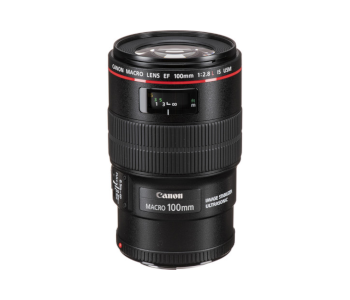 | Canon EF 100mm f/2.8L IS USM | 4.4 | 4.6 | 4.4 | 4.5 | Check Price |
 | Canon EF 50mm f/1.4 USM | 4.3 | 4.3 | 4.1 | 4.4 | Check Price |
1. Best Overall – Canon EF 24-70mm f/2.8L II USM
Editor’s Rating: 4.7/5
Do you need a workhorse lens for travel, journalism, or landscape photography? The EF 24-70mm f/2.8L II USM should cover all your needs and more as it’s the top-performing and most versatile zoom lens on review. It’s built to last a lifetime, has exemplary optics, and delivers remarkable image quality on full-frame & APS-C bodies alike. It’s a professional lens and priced as such, but the investment is absolutely worth it.
Overview of Features
The EF 24-70mm f/2.8L II USM manages to balance acceptable weight and size with an impressive array of features. It has 18 glass elements in 13 groups, three of which are dedicated to minimizing flare and chromatic aberration. The lens is weather-sealed and has a rubber ring on its mount to keep dust and moisture out. It extends when zooming but maintains a bright f/2.8 aperture throughout its focal range. Zoom creep isn’t an issue, but you can lock the glass in place when the lens is idle to prevent it from moving.
Canon outfitted the EF 24-70mm f/2.8L II USM with an Ultra-Sonic Motor responsible for speedy and precise autofocus. It performs best on full-frame cameras, acquiring subjects and sticking to them even in challenging light. Pairing it with smaller cameras makes autofocus quality less predictable as it becomes prone to hunting. Focusing is quiet and will only be picked up by your mic if the surroundings are entirely silent.
Outstanding sharpness is the EF 24-70mm f/2.8L II USM’s best feature. Central clarity is excellent across its focal length, even at f/2.8. It’s s so impressive that stepping down as far as f/8 produces little positive impact. Corners aren’t as sharp to begin with but catch up by the time you hit f/5.6. Expect peak performance between f/5.6 and f/11.
We were particularly pleased with the EF 24-70mm f/2.8L II USM’s bokeh quality. It creates smooth and evenly-rounded highlights even at 24mm, which is an uncommon and welcome sight. Flare and ghosting resistance is great as you have to deliberately position the lens to get artifacting. There’s some chromatic aberration and distortion. The former goes away with narrower apertures while you can fix the latter in post.
What We Didn’t Like
The EF 24-70mm f/2.8L II USM has no image stabilization. Canon says that adding it would have compromised the lens’s size or optics, so you’re stuck with having to use a tripod for longer exposures. There are two stops of vignetting at 24mm f/2.8.
| Tech Specs |
|---|
| Dimensions: 3.5 x 3.5 x 4.5 in. |
| Weight: 1.8 lbs. |
| Type: Standard zoom |
| Minimum focal length: 24mm |
| Maximum focal length: 70mm |
| Maximum aperture: f/2.8 |
| Minimum aperture: f/22 |
| Minimum focus distance: 1.3 ft. |
| Angle of view: 84° to 34° |
| Image stabilization: No |
| The Pros |
|---|
| Outstanding sharpness |
| Premium build quality and weather sealing |
| Accurate autofocus |
| Remarkable bokeh for a standard zoom lens |
| The Cons |
|---|
| Lacks image stabilization |
| Noticeable vignetting when wide open |
2. Best Value – Canon EF 24-105mm f/4 L IS II USM
Editor’s Rating: 4.5/5
The EF 24-105mm f/4 L IS II USM has everything you’d want from a value pick; it offers a wide focal range and great overall performance at an enticing price. It’s a stop darker than our winner but maintains its max aperture, which makes it a shoo-in for generalists in need of a strong offering for portraits and landscapes alike. Add image stabilization, and you’ve got an affordable lens equipped to deal with anything.
Overview of Features
The EF 24-105mm f/4 L IS II USM is part of Canon’s premium L series as denoted by its telltale red ring. It has the same degree of weather sealing as the 24-70mm along with fluorine coatings on its outer glass to help you clean moisture and smudging better. The focus and zoom rings are rubberized and broad enough to grip comfortably.
Focusing with the EF 24-105mm f/4 L IS II USM is accurate and pleasant, whether you’re using the ring or letting your camera do the work. The focus ring has hard stops and turns smoothly, letting you make precise adjustments quickly. Autofocus snaps to attention in a tenth of a second and rarely needs to hunt for subjects. The lens also has image stabilization that compensates for four stops and allows you to shoot handheld or in unfavorable light and get clean images.
We were pleasantly surprised by the EF 24-105mm f/4 L IS II USM’s sharpness when wide open. Landscapes will turn out great since corners start out strong and almost close the gap by f/5.6. Excellent results continue throughout the focal range and aperture, reaching their peak at 50mm between f/5.6 and f/11. The corners are at their softest at 105mm f/4 but don’t matter as much since you’re in portrait & wildlife territory.
The EF 24-105mm f/4 L IS II USM boasts well-rounded optics. You’ll notice some chromatic aberration on the fringes and can get rid of it either in-camera or with minimal editing. Vignetting reaches 1.5 stops only when the lens is wide open, which is excellent considering its short minimum focal length. Flaring isn’t problematic either and made even less intrusive if you use the petal-shaped hood.
What’s Bad About It?
The EF 24-105mm f/4 L IS II USM exhibits noticeable distortion at either end of its focal length. Barrel distortion is more pronounced yet not severe enough that correcting for it automatically when shooting JPEGS wouldn’t clear the issue up. The steep drop in sharpness at the lens’s telephoto end might be off-putting to photographers looking for a more uniform performer.
| Tech Specs |
|---|
| Dimensions: 3.3 x 3.3 x 4.7 in. |
| Weight: 1.8 lbs. |
| Type: All-in-one zoom |
| Minimum focal length: 24mm |
| Maximum focal length: 105m |
| Maximum aperture: f/4 |
| Minimum aperture: f/22 |
| Minimum focus distance: 1.5 ft. |
| Angle of view: 84° to 23° 20′ |
| Image stabilization: Yes |
| The Pros |
|---|
| Excellent value for the money |
| Wide focal range ensures versatility |
| Great central sharpness |
| Speedy autofocus backed by image stabilization |
| The Cons |
|---|
| Pronounced distortion |
| Could be sharper at the telephoto end |
3. Canon EF 70-200mm f/4L IS II USM
Editor’s Rating: 4.7/5
A telephoto lens is the only other thing you need for every imaginable kind of photography if you’ve purchased our overall winner. The EF 70-200mm f/4L IS II USM isn’t Canon’s most advanced telephoto, but it delivers outstanding sharpness coupled with impressive image stabilization with a high degree of customization.
You can also get the EF 70-200mm f/2.8L IS III USM if you don’t mind paying $500 extra for one more stop of light.
Overview of Features
The EF 70-200mm f/4L IS II USM is imposing yet lightweight for a telephoto lens. Even so, it has a metal barrel and 20 glass elements in 15 groups. These include one fluorite glass and several dispersion elements that combat glare. Weather sealing is present, as is high-end fluorine coating for easier cleaning. The lens balances well on Canon full-frame cameras on its own.
We were particularly impressed by the EF 70-200mm f/4L IS II USM’s versatile image stabilization. It compensates for five stops of camera shape and can be controlled via two switches. One turns it on and off, while the other switches between three modes. There’s the standard mode, one that’s useful for panning shots, and another that helps you keep the lens steady when following erratic subjects. There’s also a focus limiter that speeds up autofocus by ignoring subjects closer than 10 feet.
The EF 70-200mm f/4L IS II USM is tack-sharp at 70mm and becomes negligibly softer as you reach 200mm. Its telephoto end is particularly impressive as the edges and center become uniformly sharp when stepped down to f/5.6 or f/8. However, we wouldn’t recommend apertures smaller than f/11 at any focal length since diffraction starts to take its toll on image quality.
The complex glass array pays off as the EF 70-200mm f/4L IS II USM has little trouble with chromatic aberration or shooting in bright environments. Moderate amounts of pincushion distortion can be seen at 200mm and easily corrected for, while barrel distortion is less pronounced. Bokeh is nothing to write home about, but the lens is capable of rendering pleasingly blurred backgrounds.
Are There Drawbacks?
The EF 70-200mm f/4L IS II USM suffers from 2.5 stops of light falloff at f/4 200mm. Changing the aperture to f/5.6 helps, and you can achieve light uniformity across the frame at f/8. You may need a tripod mount to balance the lens on APS-C cameras properly. One doesn’t come with the lens; you have to buy it separately instead.
| Tech Specs |
|---|
| Dimensions: 3.2 x 3.2 x 6.9 in. |
| Weight: 1.7 lbs. |
| Type: Telephoto zoom |
| Minimum focal length: 70mm |
| Maximum focal length: 200m |
| Maximum aperture: f/4 |
| Minimum aperture: f/32 |
| Minimum focus distance: 3.3 ft. |
| Angle of view: 34° to 12° |
| Image stabilization: Yes |
| The Pros |
|---|
| Excellent sharpness across the focal range |
| Versatile image stabilization |
| Manageable distortion |
| Few CA issues |
| The Cons |
|---|
| Pronounced vignetting at f/4 200mm |
| Tripod collar sold separately |
4. Canon EF 16-35mm f/4L IS USM
Editor’s Rating: 4.5/5
The EF 16-35mm f/4L IS USM is a wide-angle zoom lens ideal for creatives interested in landscape or urban photography that works well for group or product shots too. It has all the build quality hallmarks of an L-series lens, is uniformly sharp regardless of focal length, and even has image stabilization wide-angle lenses usually lack.
Overview of Features
This is another Canon lens that balances affordability and performance with exemplary build quality. It isn’t heavy since most of its body is made from plastic. However, the lens retains weather sealing and comes with Super Spectra coating that takes care of flare and ghosting issues. The lens focuses and zooms internally. Its 77mm filter thread doesn’t rotate, so you can attach polarizers and ND filters for even better light control when shooting landscapes.
The EF 16-35mm f/4L IS USM has an Ultra-Sonic Motor responsible for speedy and quiet autofocus. It takes a fifth of a second or less to acquire subjects and does so silently enough to be used for video recording. There’s an AF/MF switch, but you can make adjustments manually in AF mode by operating the generously wide focus ring. Image stabilization is a welcome addition to wide-angle zoom lenses since it lets you shoot in twilight or set up longer exposures without having to rely on a tripod.
We’ve seen sharper lenses than the EF 16-35mm f/4L IS USM, but few come close in uniformity. Artistic expression is the only factor to consider when settling on an f-stop between f/4 and f/11 as differences in overall and especially corner sharpness are subtle. F/16 is when quality starts to dip due to diffraction.
The EF 16-35mm f/4L IS USM is superb when it comes to light management. You can pull off spectacular landscape photos with the sun in the frame as artifacts are hard to induce and easy to get rid of by simple repositioning. Chromatic aberration becomes visible at the lowest apertures and isn’t an issue even then. Bokeh isn’t usually a factor when discussing wide-angle lenses, but this one can create creamy and uniform highlights.
What We Didn’t Like
Predictably, barrel distortion at 16mm is the EF 16-35mm f/4L IS USM’s most glaring shortcoming. Take care of it either in the camera or by loading the lens’s profile in Lightroom. Vignetting isn’t a huge issue, but it remains present to a degree, even on low f-stops.
| Tech Specs |
|---|
| Dimensions: 3.3 x 3.3 x 4.4 in. |
| Weight: 1.4 lbs. |
| Type: Wide-angle zoom |
| Minimum focal length: 16mm |
| Maximum focal length: 35m |
| Maximum aperture: f/4 |
| Minimum aperture: f/22 |
| Minimum focus distance: 11 in. |
| Angle of view: 108° 10′ to 63° |
| Image stabilization: Yes |
| The Pros |
|---|
| Uniformly sharp across the board |
| Excellent flare & artifact reduction |
| Image stabilization increases its versatility |
| Autofocus is fast and quiet enough for video recording |
| The Cons |
|---|
| Pronounced barrel distortion at 16mm |
| Getting rid of vignetting naturally requires a narrow aperture |
5. Canon EF 100mm f/2.8L IS USM
Editor’s Rating: 4.4/5
The EF 100mm f/2.8L IS USM is an excellent macro lens you’ll love if you take pictures of birds, insects, or gems. It’s also a competent portrait lens that delivers sharp close-ups or three-quarter shots with a paper-thin depth of field. Image stabilization allows for handheld shooting while the quiet autofocus and long minimum focus distance let you get bright images without scaring off your subjects.
Overview of Features
Canon created the EF 100mm f/2.8L IS USM to withstand harsh conditions while not bogging you down. Superb weather sealing and a high tolerance for humidity mean you can take it to a rain forest or the beach and not worry about the consequences. The lens has a broad focus ring gnarled for easier rotation. It comes with a circular hood and accepts polarizers since the barrel doesn’t rotate.
The EF 100mm f/2.8L IS USM has a limiter switch that significantly enhances autofocus speed. You can set it between 1 and 1.6 feet for nearly instant focus acquisition in macro mode. Alternatively, you may set either of the two as starting values and focus to infinity when doing portraits. A fixed focal length of 100mm leaves enough room between the lens and subjects for more light to pass through, while the quiet motor won’t startle insects. Image stabilization is another welcome addition as it smooths out micro-movements that can lead to blurry images.
Conversely, the EF 100mm f/2.8L IS USM excels at introducing foreground and background blur intentionally to isolate subjects from their surroundings. This works exceptionally well for macro shots and portraits alike, although you’ll have to step down for the latter since the field is too thin at f/2.8 to keep anything other than the eyes or nose sharp.
Speaking of sharpness, the EF 100mm f/2.8L IS USM’s fixed optics and single focal length yield remarkable results. Central sharpness is already strong at f/2.8 and gets slightly better with lower apertures. The corners are never soft, but there’s a disparity between them and the center that becomes small at mid-range apertures.
What’s Bad About It?
The EF 100mm f/2.8L IS USM handles standard, lateral CA well, but the same isn’t true for the longitudinal kind. This manifests as bright cyan and magenta halos around curved subjects, especially jewelry. Luckily, the effect is strongest at f/2.8 and goes away completely by f/5.6.
| Tech Specs |
|---|
| Dimensions: 3.1 x 3.1 x 4.8 in. |
| Weight: 1.4 lbs. |
| Type: Macro lens |
| Focal length: 100mm |
| Maximum aperture: f/2.8 |
| Minimum aperture: f/32 |
| Minimum focus distance: 11.8 in. |
| Angle of view: 24° |
| Image stabilization: Yes |
| The Pros |
|---|
| Fine macro and portrait lens in one |
| World-class central sharpness |
| Produces thin depth of field |
| Focuses quickly thanks to limiter |
| The Cons |
|---|
| Pronounced longitudinal chromatic aberration at f/2.8 |
6. Best Budget Option – Canon EF 50mm f/1.4 USM
Editor’s Rating: 4.3/5
The “nifty fifty” is your best bet if there’s room in your budget for only one modestly-priced lens, and the EF 50mm f/1.4 USM is the model to get. It produces images at a neutral, natural-looking angle that corresponds to human eyesight. This results in pleasing photos no matter the subject, while a wide aperture lets you make them pop with shallow depth of field and beautiful bokeh.
Overview of Features
The EF 50mm f/1.4 USM is a lightweight “pancake” standard prime built from plastic. Its barrel has a matte-black finish that looks good but is prone to scratching. The lens isn’t weather-sealed, so you’ll want to use it in studio settings or during beautiful weather. There are only seven elements in eight groups, which helps make this the most lightweight lens on review. As we’ll see, lack of glass complexity doesn’t result in shoddy optics.
This is another lens that uses Canon’s Ultra-Sonic Motor technology. It’s as quiet as most models with USM if somewhat slower to acquire focus. This is offset by great focus accuracy and lack of hunting in low light. The focus ring is rubberized and broad, so precisely calibrating it in either auto or manual focus modes isn’t tricky.
The EF 50mm f/1.4 USM’s optical properties are commendable, given its price. Expect chromatic aberration to make an appearance only in high-contrast shots and to be subdued even then. Shooting into the sun leads to loss of detail, but flares and artifacts are kept under control. The lens exhibits some barrel distortion, nothing Lightroom or your camera can’t fix.
Light falloff handling is the EF 50mm f/1.4 USM most impressive achievement. The corners are 1.4 stops darker than the center at f/1.4 and reach uniformity by f/2.8! Bokeh and general blur are appealing as well. Nine diaphragm blades would have made for rounder highlights, but seven are enough for even and smooth shapes. You can achieve a remarkably thin depth of field with this lens, and neither the foreground nor the background appear nervous as you step down.
Are There Drawbacks?
The EF 50mm f/1.4 USM generally does well in terms of sharpness. However, its corners lag far behind central sharpness at f/1.8. Both values climb steadily with narrower apertures to reach great levels at f/4. The lens lacks image stabilization, so using it with a tripod is recommended.
| Tech Specs |
|---|
| Dimensions: 2.9 x 2.9 x 2 in. |
| Weight: 10.2 oz. |
| Type: Standard prime |
| Focal length: 50mm |
| Maximum aperture: f/1.4 |
| Minimum aperture: f/22 |
| Minimum focus distance: 1.5 ft. |
| Angle of view: 46° |
| Image stabilization: No |
| The Pros |
|---|
| Minimal vignetting for such a wide aperture |
| Lightweight and portable |
| Few CA or flaring issues |
| Low barrel distortion |
| The Cons |
|---|
| No image stabilization |
| Soft corners at f/1.4 |
Contents
- Canon EF Lenses Comparison Table
- 1. Best Overall – Canon EF 24-70mm f/2.8L II USM
- Overview of Features
- What We Didn’t Like
- 2. Best Value – Canon EF 24-105mm f/4 L IS II USM
- Overview of Features
- What’s Bad About It?
- 3. Canon EF 70-200mm f/4L IS II USM
- Overview of Features
- Are There Drawbacks?
- 4. Canon EF 16-35mm f/4L IS USM
- Overview of Features
- What We Didn’t Like
- 5. Canon EF 100mm f/2.8L IS USM
- Overview of Features
- What’s Bad About It?
- 6. Best Budget Option – Canon EF 50mm f/1.4 USM
- Overview of Features
- Are There Drawbacks?

